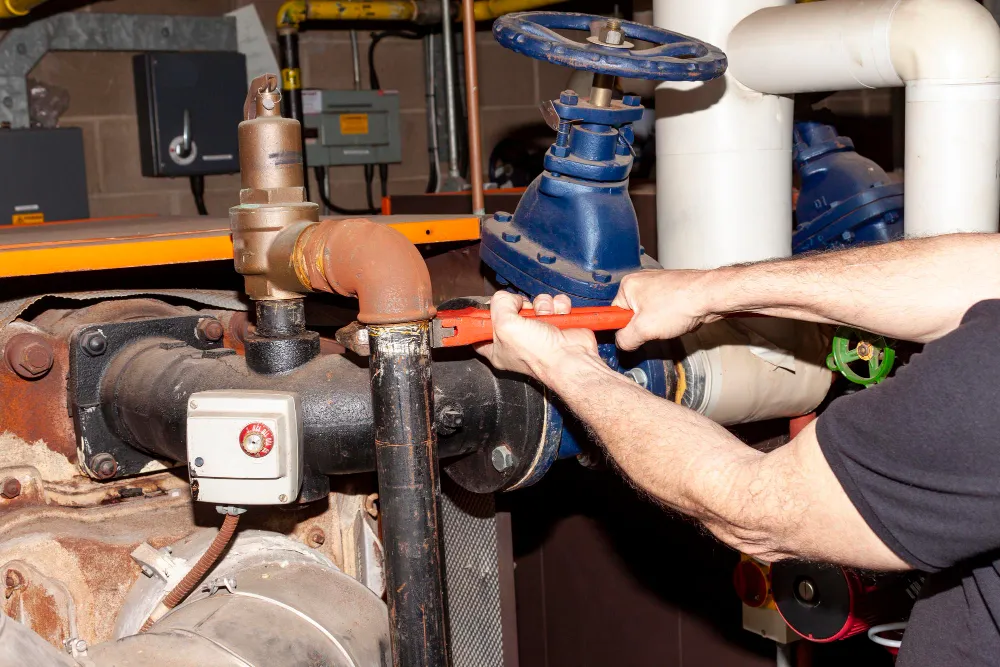Introduction
Water pumps play a vital role in homes, farms, industries, and municipal systems. They ensure water moves where it’s needed—whether for irrigation, sprinklers, household supply, or industrial operations. However, like any mechanical device, pumps can develop problems over time. Among the most common issues are unusual noises, reduced water flow, and leaks.
These problems not only reduce efficiency but can also signal underlying damage that, if ignored, could lead to costly repairs or complete pump failure. This troubleshooting guide provides a step-by-step approach to diagnosing and solving pump issues, helping you restore performance and extend the life of your pump.
Why Troubleshooting Matters
Ignoring pump problems is never a good idea. What starts as a small noise or drip can escalate into a breakdown. Proper troubleshooting helps you:
- Prevent expensive damage.
- Maintain consistent water supply.
- Extend pump lifespan.
- Improve efficiency and save energy.
Understanding Pump Basics
Before troubleshooting, it’s important to know how pumps work. Pumps move water by converting mechanical energy into hydraulic energy. Any interruption in this process—such as air leaks, clogged pipes, or mechanical wear—will affect performance. Common problems usually fall into three categories: noise issues, flow issues, and leakage issues.
Troubleshooting Noisy Pumps
Causes of Noisy Pumps
- Cavitation: Air bubbles collapsing inside the pump create a rattling or gravel-like sound.
- Bearing Wear: Worn or poorly lubricated bearings cause grinding or whining noises.
- Loose Components: Loose bolts, couplings, or mounts lead to rattling and vibration.
- Air Leaks on Suction Side: Air entering the system creates gurgling or bubbling sounds.
- Imbalance in Impeller: Debris stuck in the impeller causes vibration and noise.
Solutions for Noisy Pumps
- Ensure proper suction conditions to avoid cavitation.
- Lubricate or replace worn bearings.
- Tighten bolts, couplings, and mounts.
- Inspect suction pipes for cracks or leaks.
- Clean impellers and remove debris.
Troubleshooting Reduced Flow
Causes of Reduced Flow
- Clogged Intake or Impeller: Debris blocks water entry.
- Airlocks: Air trapped in pipes disrupts flow.
- Worn Impellers: Impellers lose efficiency as they erode.
- Pipe Leaks: Water escapes before reaching the outlet.
- Incorrect Pump Sizing: Pump may not meet demand.
- Valve Problems: Partially closed or faulty valves restrict flow.
Solutions for Reduced Flow
- Clean intake screens and impellers regularly.
- Bleed air from the system to remove airlocks.
- Replace worn or corroded impellers.
- Inspect piping for leaks and repair as needed.
- Ensure valves are fully open and functional.
- Recheck pump sizing against system requirements.
Troubleshooting Leaks
Causes of Pump Leaks
- Seal Failure: Worn mechanical seals or gaskets allow water to escape.
- Corrosion: Rust weakens the casing and joints.
- Loose Connections: Pipe joints, fittings, or bolts may loosen over time.
- Cracked Pump Housing: Often due to freezing or overpressure.
- Excessive Vibration: Loosens seals and fittings, causing leaks.
Solutions for Leaks
- Replace worn seals and gaskets.
- Use corrosion-resistant materials or coatings.
- Tighten all fittings and bolts during maintenance.
- Protect pumps from freezing temperatures.
- Reduce vibration by balancing the pump and correcting misalignment.
Step-by-Step Troubleshooting Process
Step 1: Observe Symptoms
Listen for unusual noises, check pressure and flow, and look for visible leaks.
Step 2: Gather Data
Record flow rate, pressure levels, and power consumption. Compare to the pump’s specifications.
Step 3: Isolate the Problem
Determine whether the issue lies in the pump, piping, power source, or water supply.
Step 4: Inspect Components
Check impellers, seals, bearings, and pipes for visible damage.
Step 5: Take Corrective Action
Apply the appropriate fix—whether tightening bolts, cleaning debris, or replacing worn parts.
Step 6: Test Performance
After repairs, run the pump and confirm that flow, pressure, and noise levels have returned to normal.
Preventive Measures to Avoid Future Problems
- Routine Inspections: Check for leaks, noise, and vibration.
- Regular Cleaning: Keep intakes and filters free from debris.
- Proper Lubrication: Follow manufacturer recommendations.
- Correct Installation: Ensure alignment and secure mounting.
- Monitor Performance: Use gauges and sensors for early detection.
When to Seek Professional Help
While basic troubleshooting can be done by homeowners or operators, some issues require professional repair:
- Rewinding or replacing electric motors.
- Repairing cracked housings.
- Major seal and bearing replacements.
- Persistent cavitation or vibration issues.
Conclusion
Water pumps are durable machines, but they need attention when issues arise. Noises, reduced flow, and leaks are often symptoms of underlying problems such as cavitation, clogging, or seal wear. By following a structured troubleshooting process, you can quickly diagnose and resolve these problems, keeping your system running smoothly. Preventive maintenance further ensures long-term reliability and efficiency.
FAQs
Q1: Why is my pump making a rattling noise?
Most likely cavitation or debris stuck in the impeller. Check suction conditions and clean the impeller.
Q2: Why has my pump’s flow suddenly dropped?
Common reasons include clogged intake, worn impeller, or pipe leaks. Inspect these areas first.
Q3: How do I fix a leaking pump seal?
Replace the seal or gasket with a compatible part. Temporary fixes like sealants won’t last.
Q4: Can leaks damage other parts of my system?
Yes, leaks can lead to water loss, corrosion, and damage to bearings or electrical components.
Q5: How often should I troubleshoot my pump?
Conduct inspections monthly for residential pumps and more frequently for industrial systems.
